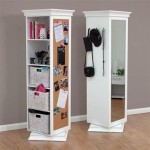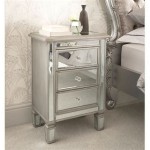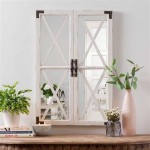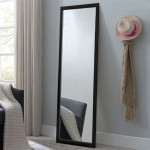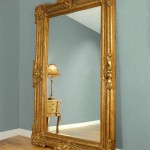Mirrored Kitchen Backsplash Tiles: A Guide to Their Essential Aspects
Mirrored kitchen backsplash tiles are a captivating choice for homeowners seeking to elevate the aesthetics and functionality of their kitchens. These tiles reflect light, creating the illusion of a larger space and adding a touch of glamour to the room. However, selecting and installing mirrored tiles requires careful consideration of various aspects to achieve the desired outcome.
Materials
Mirrored backsplash tiles come in various materials, each with unique characteristics:
- Glass: Clear and reflective, glass tiles are a classic choice. They are durable and easy to clean, but can be more expensive than other materials.
- Acrylic: A more affordable option than glass, acrylic tiles provide a similar reflective effect. They are lightweight and shatter-resistant, making them suitable for areas with high foot traffic.
- Metal: Metal tiles, such as stainless steel or aluminum, offer a sleek and modern look. They are highly durable and resistant to heat and moisture.
Styles
Mirrored backsplash tiles come in a wide range of styles:
- Antiqued: These tiles have a distressed or aged look, adding character to the kitchen.
- Beveled: Tiles with beveled edges create a subtle three-dimensional effect that enhances the reflective qualities.
- Frosted: Frosted tiles have a matte finish that diffuses light, creating a softer glow.
- Geometric: Tiles with geometric patterns, such as subway or hexagonal, add a modern twist to the backsplash.
Installation
Installing mirrored backsplash tiles requires proper preparation and careful execution:
- Surface Preparation: The wall surface must be smooth and level to ensure proper adhesion.
- Adhesive: Mirror-specific mastic or epoxy adhesive is recommended for bonding the tiles to the wall.
- Grout: Use a non-sanded grout to fill the gaps between the tiles and prevent moisture penetration.
- Sealant: Apply a sealant around the edges of the tiles to further protect them from moisture and enhance durability.
Maintenance
Maintaining mirrored backsplash tiles is essential to preserve their beauty and functionality:
- Regular Cleaning: Wipe down the tiles with a glass cleaner or a mild detergent and soft cloth.
- Avoid Abrasives: Do not use harsh cleaners or abrasive sponges, as they can damage the reflective surface.
- Water Management: Keep the backsplash area dry to prevent moisture buildup and potential damage.
Considerations
Before installing mirrored kitchen backsplash tiles, consider the following:
- Budget: Mirrored tiles can be more expensive than traditional backsplash materials.
- Kitchen Layout: The size and shape of the kitchen will influence the type and quantity of tiles needed.
- Lighting: Adequate lighting is crucial to maximize the reflective properties of the tiles.
Conclusion
Mirrored kitchen backsplash tiles offer a unique combination of aesthetics and functionality, enhancing the beauty and spaciousness of any kitchen. By carefully considering the materials, styles, installation techniques, and maintenance requirements, homeowners can create a stunning and durable backsplash that will be a focal point of their kitchen for years to come.

Mirrored Kitchen Backsplash Design Ideas
5 Stunning Mirror Tiles To Brighten Your Room Tileist By Tilebar

Give Your Kitchen An 80 S Inspired Ugrade Mirrored Subway Tile Contemporary Paint

Mirrored Herringbone Backsplash Tiles Tile Design Mirror

Mirrored Tiles Mirrorworld

Mirrored Backsplash In The Kitchen Makerista

53 Mirror Backsplash Unique Stylish Reflective Backsplashes

Mirrored Kitchen Backsplash Tiles Design Ideas

60 Mirrored Backsplash Ideas Kitchen Design Remodel

53 Mirror Backsplash Unique Stylish Reflective Backsplashes

